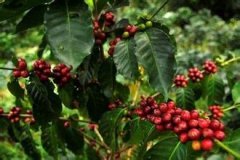Coffee producing areas of Venezuela introduce San Cristobal
Venezuela's best coffees are Montebello from San Cristobal de Tachira, Miramar from Rubio de Tachira, Granija from Timote de Merida and Ala Granjia from Santa Ana de Tachira. Other premium brands include Maracaibos (the name of the coffee export port), Merida, Trujillo, Santa Filomena and Cucuta.
One of the many plantations in Merida below the Andes belongs to the Pablo and Luisa Helena Pulido families, an ancient farm that has been allowed to downsize. Since taking over the farm in the early 1980s, the Pulidos have grown new species while harvesting coffee from existing bourbon trees.
The Caracas perimeters, also known for coffee, have resumed production. The Jean and Andres Boulton plantations in Turgua are also home to tipika coffee trees.
Features of Venezuelan Coffee:
Venezuelan coffee tastes different from other Latin American coffees in that it is delicious, light and less sour than traditional coffee, which makes it not only blended but also unique.

Flavor: Rich, fruity aromas
Recommended baking methods: medium to deep baking, multiple uses
★★: Good
Venezuelan coffee market:
Currently, Venezuelan coffee is mostly exported to Russia and Colombia, where it is repackaged. Many newly rebuilt small plantations have also begun exporting coffee on their own. Coffee is not very prominent among the many industries in the country
Important Notice :
前街咖啡 FrontStreet Coffee has moved to new addredd:
FrontStreet Coffee Address: 315,Donghua East Road,GuangZhou
Tel:020 38364473
- Prev

Taste balanced, mellow, full-bodied with chocolate flavor New Oriental Manor New Oriente
The term "fine coffee" was first put forward by Ms. Knudsen of the United States in Coffee and Tea magazine. At that time, Ms. Knudsen, as a coffee buyer at B.C. Ireland in San Francisco, was very dissatisfied with the neglect of the quality of raw coffee in the industry, and even some big roasters mixed a large amount of Robesda beans in the comprehensive beans, so she put forward the concept of boutique coffee.
- Next

Volcano San Marco Volcanic San Marcos American Coffee has subtle flowers in its aroma and taste
The term "fine coffee" was first put forward by Ms. Knudsen of the United States in Coffee and Tea magazine. At that time, Ms. Knudsen, as a coffee buyer at B.C. Ireland in San Francisco, was very dissatisfied with the neglect of the quality of raw coffee in the industry, and even some big roasters mixed a large amount of Robesda beans in the comprehensive beans, so she put forward the concept of boutique coffee.
Related
- Does Rose Summer choose Blue, Green or Red? Detailed explanation of Rose Summer Coffee plots and Classification in Panamanian Jade Manor
- What is the difference between the origin, producing area, processing plant, cooperative and manor of coffee beans?
- How fine does the espresso powder fit? how to grind the espresso?
- Sca coffee roasting degree color card coffee roasting degree 8 roasting color values what do you mean?
- The practice of lattes: how to make lattes at home
- Introduction to Indonesian Fine Coffee beans-- Java Coffee producing area of Indonesian Arabica Coffee
- How much will the flavor of light and medium roasted rose summer be expressed? What baking level is rose summer suitable for?
- Introduction to the characteristics of washing, sun-drying or wet-planing coffee commonly used in Mantenin, Indonesia
- Price characteristics of Arabica Coffee Bean Starbucks introduction to Manning Coffee Bean Taste producing area Variety Manor
- What is the authentic Yega flavor? What are the flavor characteristics of the really excellent Yejasuffi coffee beans?

